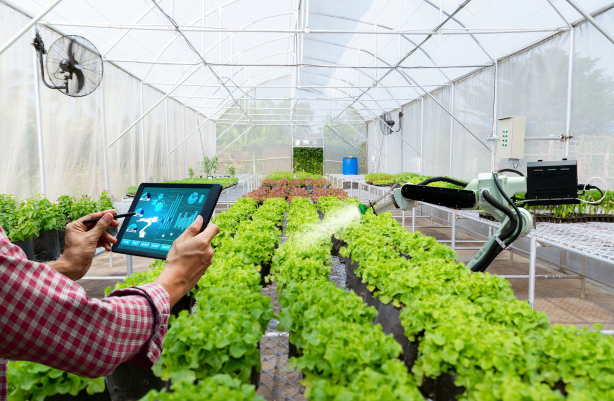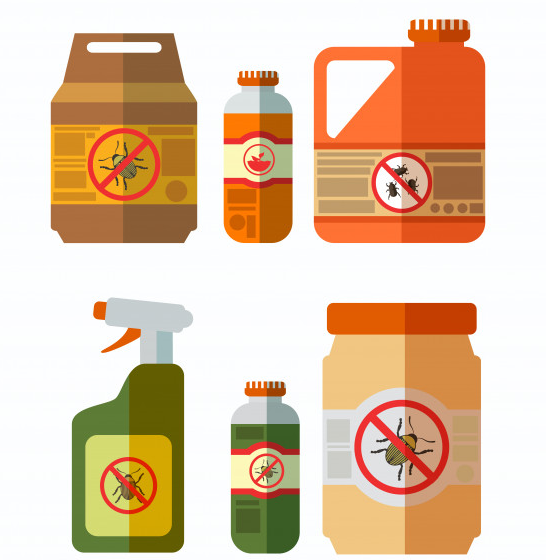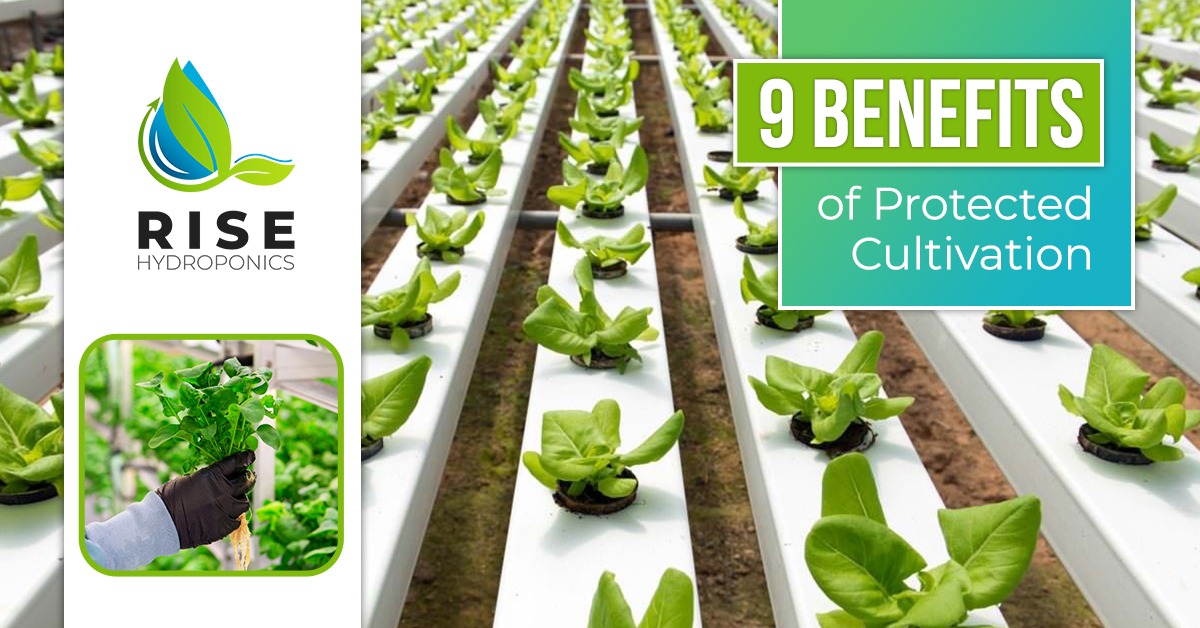To answer the titular question you must know the exact definition of controlled environment agriculture. Therefore, coming straight to the point CEA or controlled environment agriculture is producing plants in a protected environment. This protected environment will optimal conditions of growth maintained throughout the plant’s life cycle. Protected Cultivation or Farming is actually called CEA. That means, if you have an enclosed environment you can grow pretty much anything. Right from shipping containers to greenhouses and warehouses to spare rooms CEA permits plant growth.
This system will control variables like light, nutrient concentration, carbon dioxide, humidity, and temperature. The best part about CEA is that it uses simple low-tech and hi-tech systems. Now, let us all find out what the different CEA types and the 9 benefits of protective cultivation to know CEA even better.

Various CEA forms are listed down below:
Aquaponics
This one is a combination of aquaculture and hydroponics. Water is re-circulated and water from the aquatic organisms is utilized for the growth of plants.
Vertical Farming
A crop production technique that makes use of vertical space is called vertical farming. You can stack the plants in tall towers or horizontally. This farming style is excellent for small spaces like high-density spaces and shipping containers as you require less land for cultivation.
Hydroponics
This method is one of the best ways to grow plants using water rich in nutrients and without soil. You basically submerge the roots in the water directly in a growth medium.
Protected Cultivation / Cropping
Protected cropping is a type of CEA. In this method, you can grow crops outdoors with protection against elements like canopies, tunnel houses, and beneath hoop houses.
Here are the benefits of protected cultivation :
1.Production of genetically better and disease-free transplants
Protected farming is associated with uniform, healthy and disease-free plant material. This planting material presents better hardening and enhanced germination percentages. That is because disease-free, clean and inert substrate is used all through the world to produce greenhouse cucumbers and tomatoes. You can be completely assured of genetically better transplants that are free of diseases.
Fact to know: the frame of the structure used in protected cultivation safeguards the different crops from several damaging factors. These include chemical and physical deterioration, climate moisture, soil, snow, rain and wind.
2. Produce fruit crops, vegetables and flowers all year round
There is nothing called off season in protected cultivation. Thus, that means that this farming method is a lot more rewarding economically. You can grow veggies and fruits even in the off season. Net-houses, walk-in tunnels and shade have made possible year-round production of veggies.
Fact to know: Are you worried that about not getting tomatoes, summer squash or cucumbers in the winters? It is time to stop worrying and start filling your big shoppers. That is because, everything from tomatoes to okras are now available with protected cultivation.
3. Higher crop yield and enhanced productivity
Techniques of protected cultivation increase the crop yield. Do you know how? Higher density of plants by close planting increases yields of veggies and fruits tremendously
you are controlling the micro climate surrounding the body of the plant fully or partially as per the requirement of plant species. Like for instance, if you use low plastic tunnels early nurseries of flowering annuals and veggies can be increased.
4. Promotes quality and high value horticultural produce
With protected cultivation you can always expect high value horticultural produce of cherries, capsicum and muskmelons. If you are wondering how then the credit goes to the net houses. These houses make help in reducing the adverse effects of rains, and scorching sun in herbs, ornamentals and veggies.
Fact to know: If you are a fan of colored capsicums then there is nothing like protective cultivation for growing the cool season crop. In just 4-5 months you can get 20-40 tons of colored bell peppers. The insect-free net houses ensure virus-free cultivation.
5. Minimizes the use of pesticides
Protected cultivation encompasses a sustainable approach. The poly house helps in changing the micro climate hence certain insects cannot enter.

Fact to know: Insects that get attracted because of UV light cannot enter because of the opaque UV covering. Consequently, there is minimum use of pesticides and insecticides.
6. Enhances productivity per unit area
With perfect plant environment control and appropriate structures like glasshouse, you can expect year-round cultivation.
Fact to know: with protected cultivation you can have 25-100 percent productivity. And, in some cases, even more.
7. Minimum infestation by weeds and efficient use of water
Protected cultivation prevents the growth of weeds as you control the temperature conditions by using several structures. These can be low tunnels, shade net house, polyhouse and a greenhouse. With no weed growth there is higher uptake of micro-nutrients by the active zone of the roots. This process conserves soil moisture and thereby reduces the requirement of irrigation water.
Fact to know: protected cultivation acts a smart barrier to soil pathogens thus you can never find any weed growth in your crops.
8. No abiotic or biotic stress to plants
As you may know, plants are sessile. They cannot escape any kind of biotic or abiotic stresses. Biotic stresses are caused by living organisms like fungi, weed and abiotic stress is linked with the environment’s physiographic, edaphic and climatic conditions. However, protected cultivation is one such cropping technique that preserves plants from all kinds of stresses.
Fact to know: A controlled environment saves the crops from insects that love UV or harsh climatic conditions. Hence, you can enjoy an year-round cultivation besides off-season crop production as well.
9. Grow medicinal and rare plants
Protected cultivation lets you modify the natural environment thus you can achieve optimum growth of plants. You can make modifications both in the root and aerial environment hence the crop yields increase. This means a greenhouse technique like protected cultivation will let you cultivate a wide variety of herbs/orchids and other medicinal plants.
Protected cultivation : The best open field production?
Protected cultivation is enabling cultivators to produce several folds of great quality veggies and fruits. You can forget about climatic and biological constraints. It is all about skillfully adopting the needful practices with exactness and you can grow your own crop, come what may!

